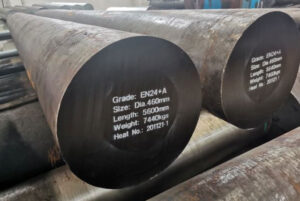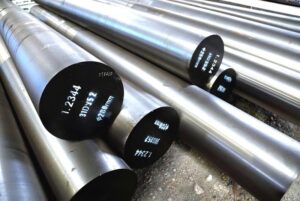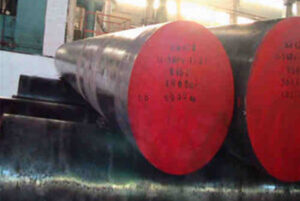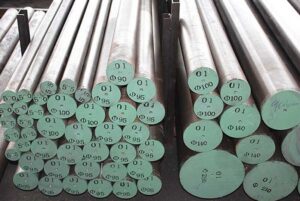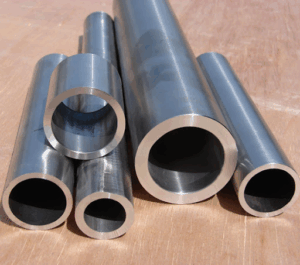In the realm of engineering, where resilience and reliability reign supreme, special steels emerge as the champions. These meticulously crafted alloys transcend the limitations of their commonplace counterparts, boasting exceptional strength, toughness, and resistance to wear. Today, we delve into the remarkable world of Special Steel 36CrNiMo4/1.6511/SNCM439/EN24, unraveling its secrets and exploring its diverse applications.
The Building Blocks: Chemical Composition
Imagine a superhero. Their extraordinary abilities stem from a unique composition. Similarly, the exceptional properties of Special Steel 36CrNiMo4/1.6511/SNCM439/EN24 are attributed to its carefully balanced chemical makeup. Let’s delve into the key elements that forge its strength:
| Element | Weight Percentage (Typical) | Role |
|---|---|---|
| Chromium (Cr) | 1.40 – 1.80 | Enhances hardenability, corrosion resistance, and tempering stability. |
| Nickel (Ni) | 1.65 – 2.00 | Improves toughness and impact resistance, especially at low temperatures. |
| Molybdenum (Mo) | 0.20 – 0.30 | Contributes to hardenability, tempering resistance, and resistance to softening at elevated temperatures. |
| Carbon (C) | 0.38 – 0.43 | The foundation of steel’s strength. The precise amount influences hardenability and machinability. |
| Manganese (Mn) | 0.60 – 1.00 | Enhances hardenability, grain refinement, and hot working characteristics. |
| Silicon (Si) | 0.15 – 0.35 | Improves hardenability and deoxidation during steelmaking. |
| Iron (Fe) | Balance | The primary constituent, forming the steel matrix. |
This specific blend of elements empowers Special Steel 36CrNiMo4/1.6511/SNCM439/EN24 to excel in demanding applications where resilience and longevity are paramount.
A Force to be Reckoned With: Mechanical Properties
Imagine a bridge that withstands the relentless pounding of traffic for decades. Or a gear that transmits immense power without succumbing to wear. These feats are achievable thanks to the phenomenal mechanical properties of Special Steel 36CrNiMo4/1.6511/SNCM439/EN24. Let’s explore the numbers that define its might:
| Property | Typical Value | Units |
|---|---|---|
| Tensile Strength | 830 – 1030 | MPa |
| Yield Strength | 620 – 750 | MPa |
| Elongation at Fracture | 14 – 18 | % |
| Impact Strength (Charpy V-Notch) | 40 – 60 | J |
| Hardness (Brinell) | 280 – 340 | HBW |
These impressive values paint a picture of a steel that can handle significant loads without breaking (tensile strength), resist permanent deformation (yield strength), and maintain its integrity even under impact (impact strength). The high hardness translates to excellent wear resistance, making it ideal for components that experience constant friction.
However, it’s important to remember that these are typical values, and the specific properties can be tailored through heat treatment processes, which we’ll explore in a later section.
From Gears to Girders: Applications of Special Steel 36CrNiMo4/1.6511/SNCM439/EN24
Special Steel 36CrNiMo4/1.6511/SNCM439/EN24 isn’t a one-trick pony. Its versatility allows it to shine in a wide range of applications, each demanding a unique blend of strength, toughness, and wear resistance. Here are some prominent examples:
| Application | Reason for Use |
|---|---|
| Gears | High strength, wear resistance, and fatigue resistance ensure smooth operation and extended lifespan. |
| Shafts | Excellent strength-to-weight ratio allows for efficient transmission of power without excessive weight. |
| Connecting Rods | The ability to handle high loads and resist fatigue makes them ideal for internal combustion engines. |
| Crankshafts | Similar to connecting rods, their strength and fatigue resistance are crucial for reliable engine operation. |
| Axles | Their exceptional strength and wear resistance enable them to handle heavy loads and endure harsh operating conditions. |
| Application | Reason for Use |
|---|---|
| High-Strength Fasteners | The steel’s strength allows for the creation of compact fasteners capable of withstanding significant clamping forces. |
| Bearings | When properly heat treated, Special Steel 36CrNiMo4/1.6511/SNCM439/EN24 exhibits excellent wear resistance, making it suitable for bearing races. |
| Forgings | Its good forgeability allows for the creation of complex shapes while maintaining the desired mechanical properties. |
| Oil and Gas Industry | The steel’s toughness and resistance to sour gas environments make it valuable for downhole components. |
| Construction Equipment | Components like excavator arms and bucket teeth benefit from the steel’s strength and wear resistance. |
These are just a few examples, and the potential applications for Special Steel 36CrNiMo4/1.6511/SNCM439/EN24 extend far beyond this list. With its exceptional properties, it finds its way into various industries, from automotive and construction to oil and gas and beyond.
The Art of Transformation: Heat Treatment
Just like a skilled sculptor transforms a block of stone into a masterpiece, heat treatment unlocks the full potential of Special Steel 36CrNiMo4/1.6511/SNCM439/EN24. By manipulating temperature and time, we can tailor the steel’s microstructure and, consequently, its mechanical properties to suit specific applications. Here’s a glimpse into the most common heat treatment processes for this steel:
| Heat Treatment Process | Description | Effect on Properties |
|---|---|---|
| Annealing | Heating the steel to a high temperature and then slowly cooling it allows for improved machinability and ductility. | This process softens the steel, making it easier to machine or form into desired shapes. |
| Normalizing | Heating the steel to a specific temperature and then allowing it to cool in air at room temperature. | This refines the grain structure, resulting in a more balanced combination of strength and toughness. |
| Hardening | Rapidly cooling the steel from a high temperature (usually by quenching in water or oil). | This process significantly increases the steel’s hardness and strength but can also make it more brittle. |
| Tempering | Heating the hardened steel to a lower temperature and then cooling it. | Tempering “tempers” the brittleness caused by hardening while still maintaining a good level of strength. The specific tempering temperature determines the final balance of hardness, toughness, and ductility. |
Understanding these heat treatment processes is crucial for engineers to select the optimal properties for their desired application.
Finding the Right Fit: Suppliers and Pricing
Sourcing Special Steel 36CrNiMo4/1.6511/SNCM439/EN24 isn’t an expedition to a hidden island. Fortunately, numerous reputable suppliers offer this versatile steel in various shapes and sizes. Here’s a brief overview:
| Supplier Region | Potential Advantages |
|---|---|
| North America & Europe | Established steel mills with stringent quality control standards. |
| Asia (China, India) | Competitive pricing and readily available stock. |
Pricing is influenced by several factors, including:
- Form (bar, plate, sheet, etc.)
- Size (diameter, thickness, etc.)
- Quantity
- Surface finish
- Heat treatment condition
It’s recommended to contact multiple suppliers and request quotes based on your specific needs to secure the most competitive price.
A Balanced Perspective: Advantages and Disadvantages
Every material has its own story, with strengths and weaknesses to consider. Special Steel 36CrNiMo4/1.6511/SNCM439/EN24 is no exception. Here’s a breakdown of its key advantages and disadvantages:
| Advantage | Disadvantage |
|---|---|
| Exceptional Strength & Toughness | Can be more expensive compared to some common steels. |
| Excellent Wear Resistance | Requires proper heat treatment to achieve desired properties. |
| Good Forgeability | May require preheating before welding. |
| Versatile Across Applications | Not ideal for applications requiring high formability. |
By carefully weighing these pros and cons, engineers can make informed decisions about whether Special Steel 36CrNiMo4/1.6511/SNCM439/EN24 is the right choice for their project.
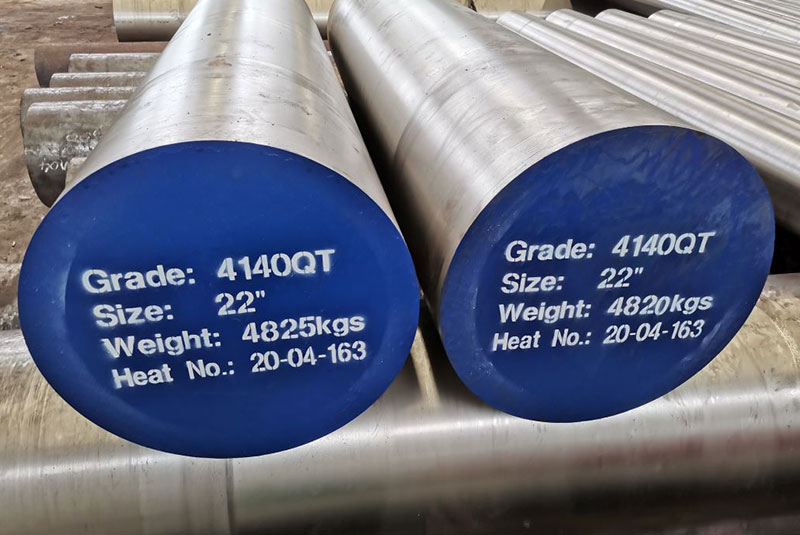
FAQ
Q: How does Special Steel 36CrNiMo4/1.6511/SNCM439/EN24 compare to other alloy steels?
A: This steel offers a good balance of strength, toughness, and wear resistance compared to other common alloy steels like:
- SAE 4140: Similar strength and toughness, but lower hardenability and wear resistance.
- AISI 4130: Slightly lower strength and toughness, but with better weldability.
- SNCM 220: A Japanese equivalent with comparable properties but potentially different availability depending on your region.
The best choice depends on the specific application requirements and priorities.
Q: What are some specific examples of heat treatment processes used for Special Steel 36CrNiMo4/1.6511/SNCM439/EN24?
A: Here are some common heat treatment regimes for this steel:
- For Gears: Quenching in oil followed by tempering at 160-180°C results in a good balance of strength, toughness, and wear resistance.
- For Shafts: Normalizing followed by tempering at around 500°C optimizes a balance of strength and machinability.
- For Bearings: Through hardening (quenching in oil or water) followed by tempering at 150-200°C maximizes wear resistance for bearing races.
Q: Is Special Steel 36CrNiMo4/1.6511/SNCM439/EN24 difficult to weld?
A: While weldable, this steel’s higher carbon content can lead to weld hardening and cracking if not welded properly. Preheating before welding and using appropriate welding procedures are crucial to ensure strong and crack-free welds. Consulting with a qualified welder is advisable for critical applications.
Q: What are some alternatives to Special Steel 36CrNiMo4/1.6511/SNCM439/EN24 if cost is a major concern?
A: If cost is a primary consideration, some potential alternatives include:
- AISI 1045: A less expensive option with good strength, but lower hardenability and wear resistance.
- SAE 1050: Offers a balance of affordability and machinability, but with lower overall strength compared to Special Steel 36CrNiMo4/1.6511/SNCM439/EN24.
Remember, a cost-benefit analysis is essential. While a cheaper steel might seem appealing upfront, it might not perform as well in the long run, leading to premature replacement and potentially higher overall costs.
Conclusion
Special Steel 36CrNiMo4/1.6511/SNCM439/EN24 stands as a testament to human ingenuity in crafting materials that defy limitations. Its exceptional strength, toughness, and wear resistance make it a champion in diverse applications where reliability and resilience are paramount. By understanding its composition, properties, and how to unlock its full potential through heat treatment, engineers can leverage this remarkable steel to bring their projects to life. So, the next time you encounter a machine operating tirelessly or a structure standing firm, remember that Special Steel 36CrNiMo4/1.6511/SNCM439/EN24 might be the silent hero behind the scenes, ensuring strength and longevity.

